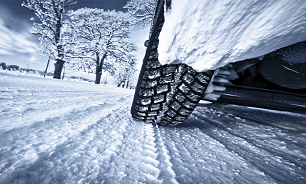Winter/Snow Tires vs. All-Season Tires: How They Compare
This time of year, many drivers debate whether to invest in a dedicated set of winter/snow tires. With advances in all-season tires and mild winters in some areas, it is a fair question to ask.

Khodrocar - Consumer Reports tests consistently show that winter/snow tires deliver better grip to start in snow and stop on icy surfaces. They offer an extra margin of performance over all-season and all-terrain tires, and we have the data to prove it. (See our tire ratings.)
If you have to drive in snowy conditions, winter/snow tires out-perform most all-season and all-terrain tires with better stopping and starting ability. They are good choices for all cars, whether front, rear, or all-wheel drive.
Winter/snow tires can easily be identified by a mountain and snowflake symbol on the sidewall. Studless winter/snow tires typically have many slits in the tread acting as biting edges and a tread compound that stays pliable in cold temperatures.
Studable models offer good snow traction and can be studded to claw ice, though they can be noisy and leave scratch marks in driveways. For the added performance in extreme weather, winter grip comes with some concessions of potentially shorter treadwear and some compromise of handling and grip on cleared roads.
If you have to drive in snowy conditions, winter/snow tires out-perform most all-season and all-terrain tires with better stopping and starting ability. They are good choices for all cars, whether front, rear, or all-wheel drive.
Winter/snow tires can easily be identified by a mountain and snowflake symbol on the sidewall. Studless winter/snow tires typically have many slits in the tread acting as biting edges and a tread compound that stays pliable in cold temperatures.
Studable models offer good snow traction and can be studded to claw ice, though they can be noisy and leave scratch marks in driveways. For the added performance in extreme weather, winter grip comes with some concessions of potentially shorter treadwear and some compromise of handling and grip on cleared roads.
If You Are Considering Winter/Snow Tires
Always use four matching winter/snow tires for the best balance of handling and grip to stop, start, and take a corner on snow-covered roads.
Look for the mountain and snowflake symbol indicating the tire meets an industry-defined level of snow traction.
Winter/snow tires will wear more quickly than all-season tires, and their performance in winter will decline as they wear. As a best practice, replace winter/snow tires before they are worn out, and if you remove them at the end of each winter, you may get three or four seasons of good use out of them.
Latest News


